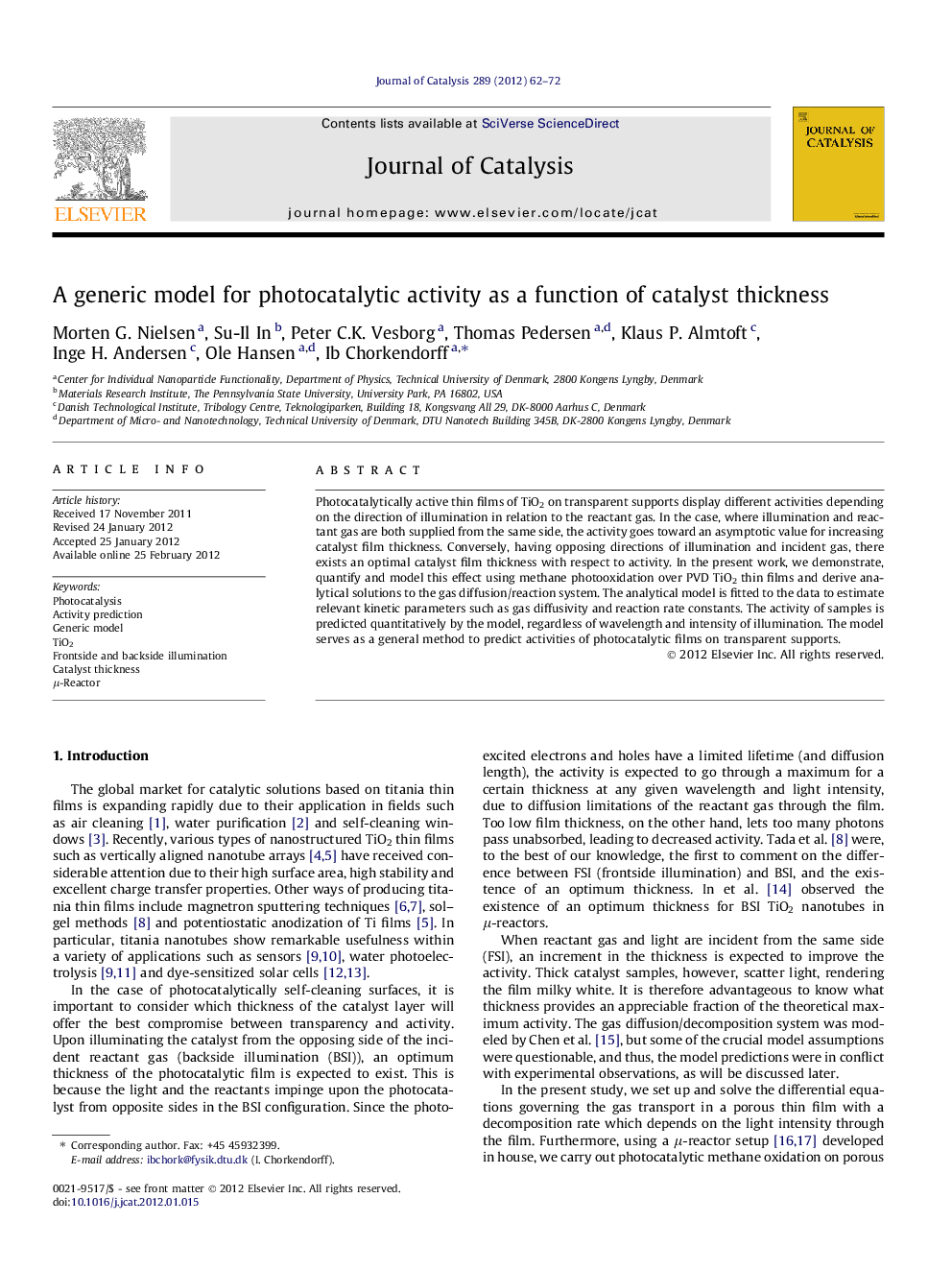| Article ID | Journal | Published Year | Pages | File Type |
|---|---|---|---|---|
| 61441 | Journal of Catalysis | 2012 | 11 Pages |
Photocatalytically active thin films of TiO2 on transparent supports display different activities depending on the direction of illumination in relation to the reactant gas. In the case, where illumination and reactant gas are both supplied from the same side, the activity goes toward an asymptotic value for increasing catalyst film thickness. Conversely, having opposing directions of illumination and incident gas, there exists an optimal catalyst film thickness with respect to activity. In the present work, we demonstrate, quantify and model this effect using methane photooxidation over PVD TiO2 thin films and derive analytical solutions to the gas diffusion/reaction system. The analytical model is fitted to the data to estimate relevant kinetic parameters such as gas diffusivity and reaction rate constants. The activity of samples is predicted quantitatively by the model, regardless of wavelength and intensity of illumination. The model serves as a general method to predict activities of photocatalytic films on transparent supports.
Graphical abstractThe activity of a photocatalyst on a transparent support as a function of catalyst thickness can be predicted by setting up a model system to describe the gas diffusion/reaction inside the catalyst film.Figure optionsDownload full-size imageDownload high-quality image (46 K)Download as PowerPoint slideHighlights► The activity of a photocatalyst on a supporting substrate is dependent on the direction of illumination. ► For illumination from the backside, an optimum thickness exists concerning activity. ► The mathematical system analog can be solved analytically and describes experimental observations well. ► Material parameters can be extracted from a fit to measurement data.
